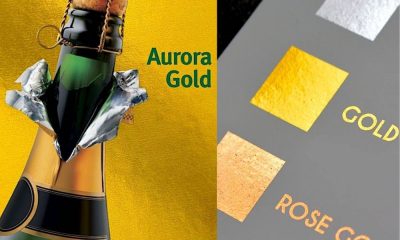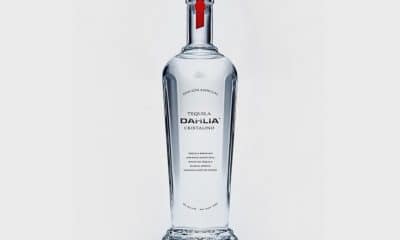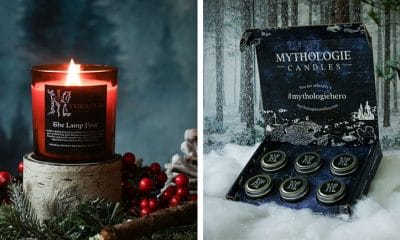Beauty & Cosmetics
Estée Lauder: How Innovative Packaging Takes Design Team Beyond Paradise
Including an interview with John Fling, vice president of package design worldwide.
Published
14 years agoon
By
BXP Staff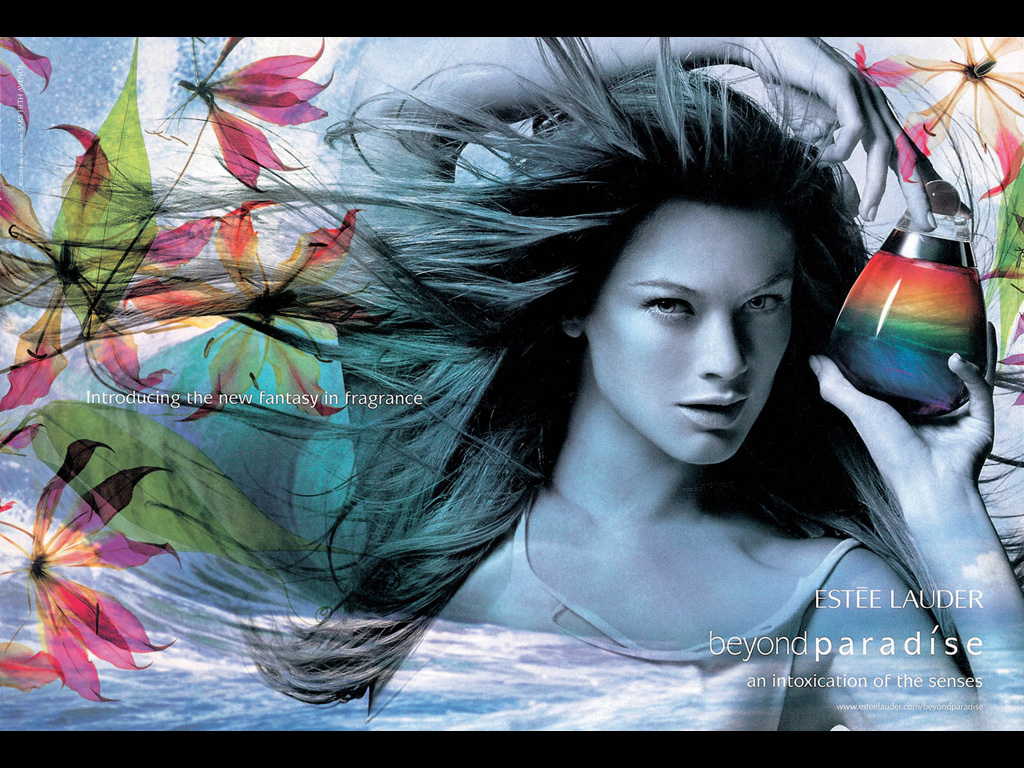
NOWHERE IN PACKAGING are product and container more tightly integrated as a creative whole than in the realm of personal fragrances. Women (and, increasingly, men) make a fashion statement not only by wearing a luxury scent, but also by wielding the bottle in which it is packaged—an assertively stylish glass vessel with design attributes as carefully blended as the attars and essences of the prized distillation inside.
Estée Lauder Inc. of New York City, an international purveyor of fine fragrances and many other beauty products for more than 50 years, never stops exploring the creative link between container and contents as a strategy for package design. The case history of the spray container for Beyond Paradise, Lauder’s newest women’s fragrance, amply demonstrates the merits of this design approach. It also highlights the desirability of glass for products whose fate in the retail marketplace depends as much on the appeal of their packaging as it does on the qualities of the products themselves.
The story also sheds light on the methods of Lauder’s packaging professionals—the design and development specialists charged with preserving the classic appeal of the Estée Lauder brand while also refashioning its image for 21st Century consumers.
Estée Lauder Inc. controls 18 brands, each with its own teams of design and development personnel. The in-house global design group for the brand bearing the name of the company’s late founder creates all primary and secondary packaging in the four categories of fragrance, makeup, skincare, and promotions. The department also handles other design projects such as holiday-themed wraps, promotional bags, and even the uniforms for Estée Lauder beauty advisors.
Not surprisingly, John Fling, vice president in charge of the global design group, speaks of the assignment as a set of tasks almost as numerous as droplets of perfume sprayed from an atomizer. “If we ever stopped to count, I’m afraid we would fall hopelessly behind. But by the time we get down to samples, country-specific variants, and offshoots of our 20 fragrances, we are in the thousands,” Fling says. Even “tweaking” an existing design, he adds, is a “major undertaking” given the scope of the brand and the one- to two-year lead times that such projects usually require.
Help from their friends
Fling and his designers get help in the execution phase from the brand’s global packaging development team, a multidisciplinary group that works closely with the design department from concept to completion of finished goods. The team’s role, says Pat Chiappetta, vice president, global packaging, is to make certain that the designers’ visions can be made tangible: “How does it feel in your hand? How does it fit? How does it function? It has to work, and it has to be beautiful.”
AdvertisementChiappetta and Fling agree that at Estée Lauder, there’s seldom a disconnect between the creative aspects of designing a package and the practical concerns of getting it into production. “A new package design project usually begins with a marketing turnover of the product’s launch position and expectations,” says Fling. “After brainstorming initial concepts in design, we work hand-in-hand with the package development group to ensure feasibility and cost effectiveness.”
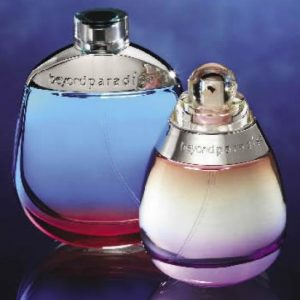
Beyond Paradise from Estee Lauder.
Chiappetta elaborates: “We then ask, ‘Can we make it? Can we afford it?'” The answer, she indicates, is usually yes. “We are so lucky to work with great designers who are grounded in reality,” says Chiappetta.
What sensuality smells like
Practicality and high concept came strikingly together in the creation of the eau de parfum spray dispenser for “Beyond Paradise,” a fragrance that promises its wearers gratifications beyond the olfactory. Wayne LoPrete, CPP, the packaging development group’s executive director, points out that because “high sensuality and high fantasy” are the associations that Beyond Paradise is meant to evoke, everything about the design of the package must reflect and reinforce these imaginative sensations. “The totality of the package provides the consumer experience,” LoPrete says.
Fling’s design group began framing the Beyond Paradise experience by creating comps (models) in various substances, trying and rejecting a number of ideas before settling upon the package’s teardrop shape. That choice, says Chiappetta, prompted “engineering” questions about how best to manufacture its contours and surfaces.
Color studies—blocks of clear Lucite sprayed with the package’s proposed colors—helped the developers evaluate how the tints would look. The bottle, which went to market decorated with four translucent colors, was originally to have had seven. But the color studies, says Chiappetta, showed that with seven, the package did not “read” right, so a narrower rainbow was chosen.
AdvertisementA choice obvious from the start was that the package would be made of glass. Plastic is Estée Lauder’s most commonly used packaging material—not long ago, the brand shifted most of its skincare products to plastic from glass. But for fragrances, says LoPrete, only glass will do. A plastic container can taint a perfume, he says, because it “imparts its own fragrance to the fragrance.” Chemically neutral glass, on the other hand, gives a fragrance a prolonged shelf life in a crystalline environment that lets all of the package’s customer-enticing design elements shine through.
Not topless, but capless
One of the most intriguing elements of the Beyond Paradise package is its alternative to something that most other perfume dispensers rely on: a removable overcap for the spray head. Eliminating the traditional cap, the closure consists of a clear plastic bubble anchored to the bottle by a faux metal collar. Built into the closure is a locking mechanism that the user rotates into dispensing position, which opens a port for the spray head.
Integral to the package, the dispensing device is “one of the most, if not the most innovative closures that we have manufactured,” according to Chiappetta. Wanting to leave nothing to chance, the development team asked Lauder employees to test its opening and closing action. The result was a decision to include written instructions for dispensing the fragrance from the package, which ships with the closure in locked position.
Careful attention to detail also characterizes the design of the package’s simpler elements. The only product identification on the primary container is a small label on the bottom of the bottle, but the Beyond Paradise secondary package carton is decorated on both the inside and the outside to enhance the experience of taking the product in hand. There is also a structural feature for safety and convenience—a collar fastened to the inside of the carton to hold the bottle in place. “We didn’t want any activation of the product in transit,” Chiappetta says.
Punishment with a purpose
Well aware that the Estée Lauder brand owes its longevity as much to its reputation for product reliability as to its high-fashion cachet, the development group is heavily committed to package testing. “We do over 30,000 package tests a year,” Chiappetta says, including torture trials such as dropping containers from heights and exposing them to temperatures comparable to what they would endure in a sun-baked automobile. Other tests aim at assuring compatibility between the container and its contents so that, as Chiappetta puts it, “the product does not attack our beautiful package.” The group also keeps its package printing vendors on their toes by testing tube or bottle printing for performance factors such as resistance to rub-off.
Because testing packages in this way is a job for qualified engineers, Estée Lauder maintains its own contingent of these experts. According to Chiappetta, the company is unique among cosmetics houses in recruiting package engineers to manage the technical aspects of development and design. She says that Estée Lauder hires graduates of schools with the best package engineering programs—Rutgers, Rochester Institute of Technology, Michigan State, and the University of Wisconsin—and engages students from these schools as interns.
AdvertisementAfter spending about a year at the company’s package testing laboratory on Long Island, Chiappetta says, the engineers are rotated “into the New York packaging experience” at Lauder’s corporate headquarters in Manhattan to acquaint them with the packaging operation as a whole. The Estée Lauder brand currently has 14 package engineers at its service, including those working in other countries.
The company’s vertical integration on behalf of its namesake brand doesn’t stop at package engineering. Estée Lauder also operates a manufacturing facility in Oakland, N.J., to fill, cap, and ship packages for fragrances and other products, serving the entire U.S. market. Similar facilities in other countries service the brand’s international markets.
Honors to prove it
It would be surprising if a fragrance with resources like these behind it failed to make a memorable impression in the marketplace. With Beyond Paradise, the only surprises have been pleasant ones of the opposite kind. A strong seller for Lauder, the sleekly packaged fragrance has earned an Editor’s Choice Award from Allure magazine, a Cosmopolitan Beauty Award, and a Beauty Insider’s Choice Award from CEW (Cosmetic Executive Women). The product has also been nominated for a FiFi Award as 2004 Fragrance of the Year in the Luxe/Women’s category by the Fragrance Foundation.
As Beyond Paradise luxuriates in the sweet smell of success, however, its high-profile performance doesn’t distract the design and development groups from maintaining equal focus on other products bearing the Estée Lauder brand. Skin care products, not fragrances, make up the brand’s largest category. Although the capless closure for Beyond Paradise was a technical milestone, designing packages for other kinds of beauty items can pose stiffer challenges.
The most difficult packages to engineer, according to LoPrete, are lipstick and mascara cases, which must be built to dispense more than just a quick and simple spritz. He says that the development group works closely with Rexam and other suppliers of dispensing systems to make Estée Lauder products as easy to apply as they are delightful to wear.
For aesthetic inspiration, however, nothing comes close to fashioning containers for fragrances. Fragrances offer package designers the greatest creative latitude, says LoPrete, because “a fragrance isn’t locked into a brand image—each one stands by itself.” Crafting a container for a product like Beyond Paradise starts with the assumption that the finished package needn’t look like anything else from Estée Lauder. This lets the designers give freer rein to their originality than in other projects.
But no package design assignment at Estée Lauder is ever an exercise in creativity for its own sake. The realities of marketing and manufacturing temper every design project, including those for fragrances. Says Fling, “A major new fragrance launch is always the most challenging due to the attention that accompanies a fragrance launch, the importance of how a new fragrance can evolve consumer perception of the brand, and the technical characteristics unique to fragrance packages.”
The scent of a man
Beyond Paradise will face these tests again in the launch of a men’s version of the fragrance, scheduled to reach store shelves in August. Lauder Beyond Paradise Men will have the same high sensuality and high fantasy brand attributes as the women’s fragrance, but in a formulation that comes from Mars, not Venus. The package for the men’s version will be different as well—it is flask-shaped with a simulated chrome trim to give it what LoPrete describes as “a simple yet strong appearance.”
The male container has a conventional chrome overcap instead of the twist-lock closure on the female package. And while its narrower, sharper-edged look might seem to be a deliberate departure from the cursive contours of the women’s bottle, the outline of the men’s package is actually a kind of Eve’s rib: it’s a cross-section of the teardrop shape of the original.
What the packaging for Beyond Paradise epitomizes, according to LoPrete, is a determination to move the Estée Lauder brand closer to the “cutting edge” of product and package design. The brand’s notions of beauty and pleasure have been more traditional than those of other cosmetics makers, he says, but this is beginning to change. Beyond Paradise, for example, is more “edgy” than other Estée Lauder products, and the packaging, according to LoPrete, reflects this edginess.
Can edginess in package design guarantee a competitive edge in the marketplace? The success of Beyond Paradise suggests that it can. No brand appears better equipped to test this hypothesis than Estée Lauder.
“Intriguing and Unexpected, But Never Loud or Gimmicky”: A Conversation with John Fling
As a part of its profile of package design and development at Estée Lauder Inc., Package Design asked John Fling, vice president of package design worldwide, to comment on related trends and practices at the company. Fling has held his present position at Estée Lauder for nine years. Before that, he was the director of product design for Tiffany and Co. for more than 15 years. His undergraduate education was in fine arts and art history, and his graduate studies in communications design took place at Pratt Institute.
PD: All brands must evolve and adapt in response to shifts in the marketplace. In terms of package design, how can the Estée Lauder brand be updated without changing its basic, traditional brand identity?
JF: Moving the brand forward without compromising its heritage requires a collective understanding and reinforcement of the brand image from every area. Estée Lauder embarked on a major brand reevaluation a few years ago that is still ongoing. In package design, there have been initiatives in all categories to modernize our look, while retaining the core elements of consumer recognition, confidence in quality, and expectation of luxury.
AdvertisementThis initiative followed a major restructuring of the company, in which the domestic and international divisions were globalized. The intention was to create a clearly identifiable brand image through words and visuals that both referenced the Estée Lauder heritage and defined the brand for future consumers. The visual cues from this study have been used both in the updating of existing brand packaging as well as in the look of all new product launches. Our entire skincare and makeup lines either have been—or are currently being—repackaged, including both primary and secondary packaging in skincare.
Of course, the new image of the brand has extended far beyond packaging to a unified vision of advertising, store design, collateral materials, and beauty advisor uniforms.
PD: Do you ever use designs provided by contract packaging firms or freelance artists, or is everything created in-house?
JF: With the amount of design projects always on the table, my design directors often contract design work from many sources, from established design firms to independent artists and sculptors. Even so, we are always closely involved in the creative development to ensure that the unique aspects of Estée Lauder design are always present in the results.
PD: Approximately how long does it take to bring a new package from the design phase to store shelves? Has the timeframe for designing and launching new packages been shrinking?
JF: Most projects involve approximately a year-and-a-half from marketing turnover to ship. Increasingly there are “fast track” programs in which a formula innovation or new concept requires that we be the first to market.
PD: Store shelves are more crowded with choices than ever before. In terms of design, what makes a package stand out from the crowd and get the attention of shoppers?
JF: In many areas such as department stores, Estée Lauder packaging is integral to the impact of the overall brand identity. For the most part, Estée Lauder design strives to be continually fresh and unique, to convey quality and inspire confidence in the product. Estée Lauder design is intriguing and unexpected, but never loud or gimmicky.
PD: How can you know that you “got it right” in designing a new package?
JF: The package is usually critiqued as it relates to the product. We usually know we got it right because we create a new design with the collaboration of a large number of highly experienced people with an inherent sense of what is right for the brand.
PD: What are the essential skills of a good package designer?
JF: First and foremost, a well-trained eye, an unwavering enthusiasm for one’s work, and the ability to be a highly creative problem solver. Unlike art, which is creativity for its own sake, a good designer always needs to be grounded in the parameters of the potentials and the limitations of any package project.
PD: What’s the outlook for fragrances, cosmetics, and other beauty products? Will more of them be coming to market? Do you see any noteworthy regional or global trends?
JF: I think the enormous flow of new products will continue. As a large global brand, Estée Lauder is increasingly attempting to introduce new products and packages that appeal to regional styles as well as to new age groups. The trend is toward customization to consumer needs, rather than a singular global presence.
SPONSORED VIDEO
Branding with Ferocity – Thinking Like an Indie Brand
Get a better understanding on how to leverage new technologies to engage and delight shoppers, sustainability’s role in product and package design – being sustainable and premium are not mutually exclusive, plus best practices and tips for collaboration and how to launch new products and refresh existing product line-ups and brands.
You may like
Advertisement

GO MINIMALISM . . . HOLD ON A MINUTE!
Sustainable, 100% Recycled Transparent Sheeting is Now a Reality!

Kroger, Walgreens to Dedicate Section of Their Stores to Reusable Packaging

6 Marketing Tips for Ecommerce Brands to Win the Holiday Shopping Season

New Wunderoots Branding Celebrates the Carrot

Fact or Fiction? The Truth about Eco-Friendly Packaging

BXP May 2021 Think & Clink

Unilever Raises Bar for Accessibility with Degree Inclusive

Crown Royal’s Limited-Edition Pack Designed by Oscar-Winner

Coca-Cola Explores World of Paper Bottles
Subscribe

BULLETINS
Get the most important news and business
ideas from BXP Magazine's news bulletin.
Latest Tweets
Advertisement
